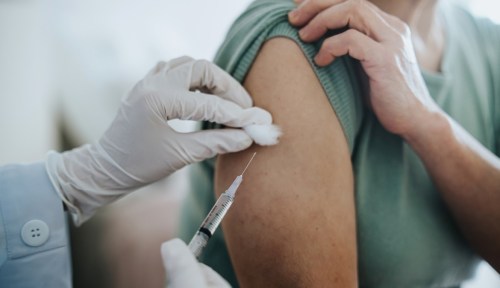Following the Supreme Court’s historic reversal of Roe v. Wade, many states immediately banned or restricted access to abortion, eliminating a nearly 50-year precedent. Thirteen states passed near-total bans, and some states enacted bans after a certain gestational period, typically between eight to 15 weeks. But even in states where abortion is still legal, accessing safe reproductive healthcare can be challenging—which is where ‘self-managed’ abortions come into play.
Experts in This Article
certified nurse midwife and VP of abortion access for CAPS at Planned Parenthood Federation of America
director of state policy &
The term which may be referred to as a self-induced, self-administered, or self-sourced abortion is an abortion done by the pregnant person, without the help of a doctor or nurse, according to Danika Severino Wynn, CNM, a certified nurse midwife, and vice president of abortion access at Planned Parenthood Federation of America.
In the past, self-managed abortions have provided an unconventional workaround for women looking to end their pregnancies. The spectrum of approaches people have used to try to induce an abortion range from the less effective or ineffective, like herbal treatments, to the unsafe, like chemicals or incorrect medications, to the dangerous, like physical harm, says Severino Wynn.
In recent years, though, the definition has become a bit muddled. The rise of telemedicine abortions—where prescribed medications are mailed to the person who wants to end their pregnancy, and a clinician oversees the process via telehealth—has caused a bit of confusion about what a self-managed abortion actually means.
So, what exactly is a self-managed abortion, and how is it different from a telemedicine abortion?
The term self-managed abortion does not refer to a particular method of ending a pregnancy—only that it is done without clinical support or supervision. Technically, telemedicine abortions are not self-managed, since a clinician is involved in the process. (Though, if a person obtained and took the same meds without the help of a clinician it would be considered self-managed.)
Medication abortions are one of the most popular methods of ending a pregnancy and are an option for pregnant people up to 10 weeks of gestation. A 2018 review by the National Academies of Sciences, Engineering, and Medicine found that abortion medication ended pregnancies 96.7 percent of the time when used for up to nine weeks.
In 2020, medication abortion accounted for 54 percent of all abortions, according to a report issued by the Guttmacher Institute. “Research shows that self-managing an abortion with abortion pills can be safe and effective,” says Severino Wynn.
The process involves taking a series of prescribed medications. Severino Wynn says the most effective regimen has been using two types of pills called mifepristone and misoprostol.
“To begin the abortion, you will first take mifepristone to block the hormone progesterone,” she says. “Without progesterone, the lining of the uterus breaks down and pregnancy cannot continue. Most people do not have any symptoms or feel different after taking the mifepristone. The second medication, misoprostol—which is taken either right away or up to 48 hours after taking the first pill—will cause cramping and bleeding similar to a heavy period or miscarriage to empty the uterus.”
Are there any risks to self-managed or telehealth abortions?
For people seeking to self-manage their abortion without prescribed abortion pills, there are many concerns and risks. It’s always best to reach out to a trusted clinician, doula, or reproductive rights organization to figure out your options for getting a safe, effective abortion.
The use of abortion pills, or medication abortion, has been used safely in the United States for more than 20 years. Severino Wynn says that research shows abortion pills are best for people who have regular periods, don’t have certain medical conditions like an inherited bleeding disorder, and can access urgent care if needed.
Like any prescription, there are risks, but unless there’s a rare or serious complication that’s not treated after taking the abortion pills, there’s no risk to any future pregnancies or the person’s overall health.
Complications are also relatively rare. According to a 2013 review of dozens of studies involving tens of thousands of patients, hospitalizations or blood transfusions were needed by fewer than 0.4 percent of people who had a medication abortion. In addition, a study that looked at thousands of women in the U.S. who received abortion pills from a provider without an in-person visit during the pandemic found that the practice was safe.
How do you access abortion pills?
With Roe overturned, abortion access is now determined by each state and its lawmakers, and this applies to abortion pills. To access abortion pills, a prescription is required. People who live in states where abortion is legal can speak with a care provider and receive the pills in person or via mail. Another option is to go the route of a telehealth provider, like Abortion on Demand and Hey Jane, who both provide pills by mail after a video visit.
People who live in states with bans will have to rely on those states where abortion is still legal. Elisabeth Smith, director of state policy and advocacy at the Center for Reproductive Rights says that anyone has the ‘right to travel’ across state lines to receive an abortion or get abortion pills in states where abortion is legal.
“The reality is that many will not be able to make the long journey and will be forced to continue their pregnancies against their will,” she says.
While the landscape of abortion access across the country is changing rapidly following the Supreme Court ruling, reproductive rights organizations, abortion providers, and online groups are working tirelessly to find ways to help those in need. “We know that prohibiting abortion does not stop people from having abortions—it just makes them more difficult to obtain,” Smith says.
Sign Up for Our Daily Newsletter
Get all the latest in wellness, trends, food, fitness, beauty, and more delivered right to your inbox.
Got it, you've been added to our email list.











